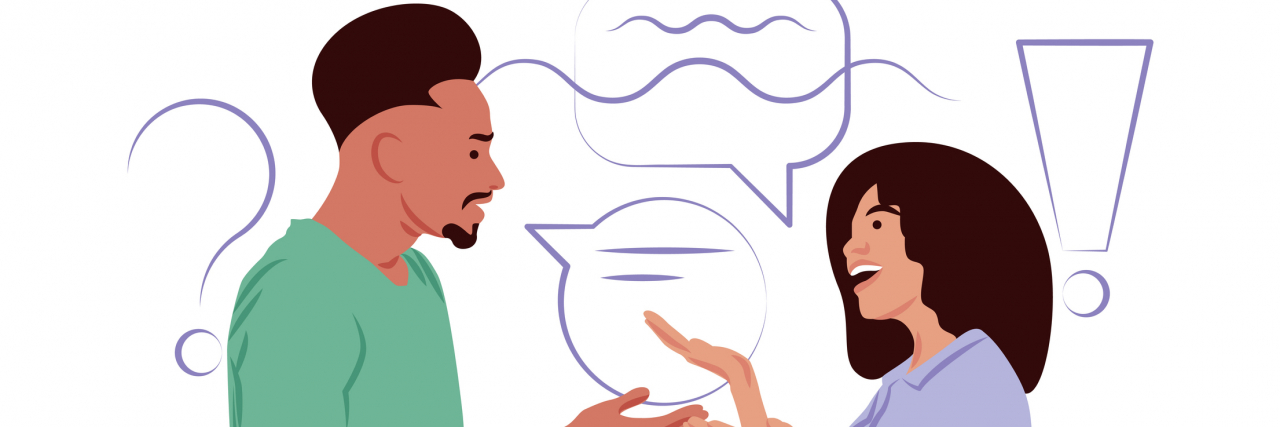What Is DARVO and How Can It Help You Recognize Emotional Abuse in Conversations?
Editor's Note
If you have experienced emotional abuse, the following post could be potentially triggering. You can contact the Crisis Text Line by texting “START” to 741741.
The acronym “DARVO” has been floating around the internet recently, and it’s sparking important conversations about recognizing emotional abuse. DARVO is a tactic many emotional abusers use to project their behavior onto their victims and gaslight emotional abuse survivors into believing they’re the ones who need to change their behavior — not their abusers. DARVO stands for “Deny, Attack, and Reverse Victim and Offender.”
Let’s break this down further:
Deny: When an abuser is confronted about their behavior toward an abuse survivor, they may deny that they ever said or did what the survivor claims they did. This first portion of DARVO is a form of gaslighting — or making a person doubt the reality of their experiences.
Attack: After denying that they ever participated in the offending action or actions, an emotional abuser may attack the victim of their abuse for mentioning that their actions were hurtful. They may try to put their victim down to dissuade them from attempting to discuss the abuse again or bring up unrelated incidents that paint the victim in a negative light. They may also say the abuse survivor is “too sensitive” or “can’t take a joke” to begin to make the survivor believe they alone are at fault.
Reverse Victim and Offender: An emotional abuser may then try to make themselves out to be the victim of their own victim’s confrontation — no matter how calmly an emotional abuse survivor attempts to discuss the issue. The abuser may say that their victim is “hurting their feelings” or claim that the abuse survivor is “attacking” them for expressing how they feel about being attacked. The abuse survivor may then feel guilty for “hurting” their abuser and apologize for doing absolutely nothing wrong because they may genuinely believe that they are in the wrong for feeling hurt by something their abuser did or said.
What DARVO looks like in conversation:
Emotional abuse survivor: “I felt hurt when you told me that I’ll never be smart enough to have the career I want. It made me feel sad, hopeless, and unintelligent.”
Emotional abuser: “I never said that. I said you have to work hard in school to succeed in any career. Don’t put words in my mouth!” (Deny)
Emotional abuse survivor: “I remember you said that. It was after I finished studying on Monday. I told you how hard my classes are, and that’s how you responded.”
Emotional abuser: “I’m so tired of you always trying to accuse me of saying rude things about you! You never respect my opinions, and you always start drama with me. When will you stop being so sensitive?” (Attack)
Emotional abuse survivor: “I’m sorry. I was just mad about the conversation we had about school. I hurt your feelings, and that was wrong of me.”
Emotional abuser: “Well, I’m glad you at least see I’m hurt! You need to quit telling me I said things I never would have said. And you probably told all your friends what a horrible person I am too — even though you made this whole thing up! I’m so tired of you bullying me all the time!” (Reverse Victim and Offender)
Emotional abuse survivor: “You’re not a horrible person, and you’re right — I should never have brought this up. Maybe I remembered it wrong. I’m so sorry for hurting you.”
At first, the emotional abuse survivor in this conversation politely mentioned their experiences and how their abuser made them feel, but they ended up apologizing to their abuser because their abuser convinced them they are abusive instead. Emotional abusers will often deny that their actions were hurtful and deflect their victims away from the issue at hand. They’ll often use blaming and shaming tactics on their victims to make those who survive their abuse feel bad for them and may even try to garner apologies from their victims by portraying themselves as victims of their own victims’ actions.
If you’re an emotional abuse survivor, you may legitimately feel like an abuser yourself after having so many conversations in which you’re made to feel like you’ve done something hurtful. Once you recognize others using DARVO on you, though, you may start to realize that you aren’t the problem. Abusers may use this strategy to twist conversations about their own hurtful actions in their favor because they don’t want to confront the reality that they did anything wrong or because they want survivors to remain afraid to speak up.
If it doesn’t feel safe to speak any further with your emotional abuser about how their actions affected you, you don’t have to initiate those conversations. After these situations take place, try to remind yourself that you are a survivor of emotional abuse, your experiences are real and valid, and DARVO is meant to illegitimately convince you otherwise. If you need help remembering that you aren’t at fault, reach out to a safe, supportive person or call an emotional abuse support line if you can. The abuse you face is not your fault, you are entitled to feel hurt and upset about it, and you are never alone.
Getty image by Denys Serebrennikov

